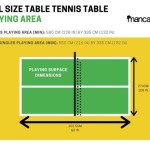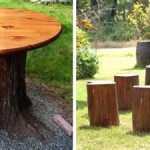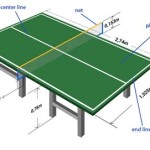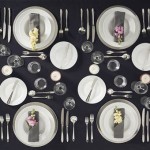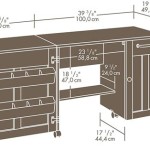Centerpieces for Dining Tables: A Contemporary Approach
The dining table serves as a central gathering space in many homes, facilitating shared meals and fostering connection. The centerpiece, strategically positioned on the table, plays a crucial role in enhancing the visual appeal of the dining area and setting the tone for the dining experience. Contemporary centerpieces, in particular, depart from traditional arrangements, embracing minimalist aesthetics, innovative materials, and unconventional designs. This article will explore key elements of contemporary centerpieces for dining tables, discussing design principles, popular materials, and practical considerations for selecting and implementing them.
Minimalism and Simplicity in Design
Contemporary design, in general, emphasizes minimalism and simplicity. This philosophy extends to centerpieces, where less is often considered more. A key characteristic of contemporary centerpieces is the absence of excessive ornamentation or clutter. The focus is on clean lines, geometric shapes, and a limited color palette. The goal is to create a visual impact through deliberate and understated elegance, rather than overwhelming the space with elaborate details.
Instead of overflowing floral arrangements, a contemporary centerpiece might feature a single, striking sculptural object, such as a ceramic vase with a unique form. The vase may be empty, or it may hold a few carefully selected stems of greenery or a single, dramatic bloom. The emphasis is on the quality and form of the individual elements, rather than the quantity of items displayed. This approach creates a sense of calmness and sophistication, allowing the dining experience to take center stage without being overshadowed by an overly elaborate centerpiece.
Another aspect of minimalist design is the use of negative space. The arrangement strategically incorporates empty areas around the focal points, creating visual breathing room and preventing the centerpiece from feeling crowded or overwhelming. This technique enhances the overall impact of the individual elements and contributes to a sense of spaciousness and balance.
The principles of minimalism extend to color selection. Contemporary centerpieces often feature a monochromatic or neutral color scheme, such as white, gray, black, or beige. This allows the textures and forms of the materials to take precedence, creating a subtle and sophisticated visual effect. Pops of color can be incorporated, but they are typically used sparingly and deliberately to create a focal point or add a touch of visual interest, rather than dominate the overall scheme.
Materials and Textures: Embracing Innovation
Contemporary centerpieces often move beyond traditional materials like flowers and candles to embrace innovative and unexpected elements. This can involve incorporating natural materials in unconventional ways, or utilizing manufactured materials in creative and artistic applications. The exploration of different textures and finishes is also a key aspect of contemporary design.
Natural materials such as wood, stone, and metal are frequently incorporated into contemporary centerpieces. A wooden bowl filled with smooth river stones can create a natural and grounding centerpiece. A metal sculpture, whether polished or raw, can add an industrial edge. These materials can be combined or used individually to create a diverse range of aesthetic effects. The key is to select materials that complement the overall design of the dining room and reflect the homeowner's personal style.
Glass is another popular material for contemporary centerpieces. Clear glass vases, bowls, or sculptures can create a sense of lightness and transparency, allowing the objects within to take center stage. Colored glass can add a subtle touch of visual interest, while textured glass can enhance the tactile experience of the centerpiece. Glass can also be combined with other materials, such as metal or wood, to create a more complex and layered design.
Beyond natural materials, contemporary centerpieces may also incorporate manufactured materials such as acrylic, resin, and concrete. These materials offer a wide range of possibilities for creating unique and sculptural forms. Acrylic can be molded into almost any shape and can be transparent or opaque, allowing for a variety of visual effects. Resin can be used to create intricate and detailed objects, while concrete can provide a raw and industrial aesthetic. The use of these materials demonstrates a willingness to experiment and push the boundaries of traditional design.
The textures of the chosen materials play a significant role in the overall impact of the centerpiece. Smooth, polished surfaces can create a sense of sophistication and elegance, while rough, textured surfaces can add a touch of rusticity and character. The interplay of different textures can create a dynamic and visually interesting arrangement. For example, combining a smooth glass vase with a rough wooden base can create a compelling contrast that draws the eye.
Practical Considerations: Functionality and Scale
While aesthetics are important, the functionality of a contemporary centerpiece should also be considered. The centerpiece should not obstruct views across the table or interfere with conversation. It should also be appropriately scaled to the size and shape of the dining table. A centerpiece that is too large or too small can disrupt the balance of the room and detract from the dining experience.
The height of the centerpiece is a crucial consideration. Ideally, the centerpiece should be either low enough to allow for unobstructed views across the table, or tall enough to be above eye level when seated. A centerpiece that is at eye level can be distracting and can hinder conversation. Low centerpieces, such as a collection of small candles or a shallow bowl filled with decorative objects, offer a safe and practical option for most dining tables.
The size of the centerpiece should be proportional to the size of the dining table. A large dining table can accommodate a more substantial centerpiece, while a smaller table requires a more delicate arrangement. A centerpiece that is too large will overwhelm the table and make it difficult to serve food or engage in conversation. A centerpiece that is too small will appear insignificant and fail to make a visual impact. As a general rule, the centerpiece should occupy approximately one-third of the table’s length.
The positioning of the centerpiece is also important. A centerpiece placed directly in the center of the table creates a sense of balance and symmetry. However, an asymmetrical arrangement can also be effective, particularly on a long rectangular table. In this case, the centerpiece can be positioned slightly off-center, creating a more dynamic and visually interesting composition.
Finally, the practicality of the centerpiece should be considered in terms of maintenance and cleaning. A centerpiece that requires constant upkeep or is difficult to clean can become a burden. Choosing durable and easy-to-clean materials can help to minimize maintenance. For example, a glass vase can be easily wiped clean, while a wooden bowl may require occasional oiling. Selecting materials and designs that are both aesthetically pleasing and practical will ensure that the centerpiece remains a source of enjoyment and visual enhancement for years to come.

16 Modern Dining Table Centerpieces You Can Use Year Round

Dining Room Table Centerpieces

25 Elegant Dining Table Centerpiece Ideas

25 Dining Table Centerpiece Ideas

Dining Room Table Centerpieces

Dining Room Table Decor Ideas How To Decorate Your

Glamorous Dining Room Inspiration

80 Best Dining Room Ideas And Decorating Tips

Table Dining Design Ideas S Remodel And Decor Elegant Room Centerpiece Classy

28 Stunning Dining Table Centrepieces Furniturebox
Related Posts



